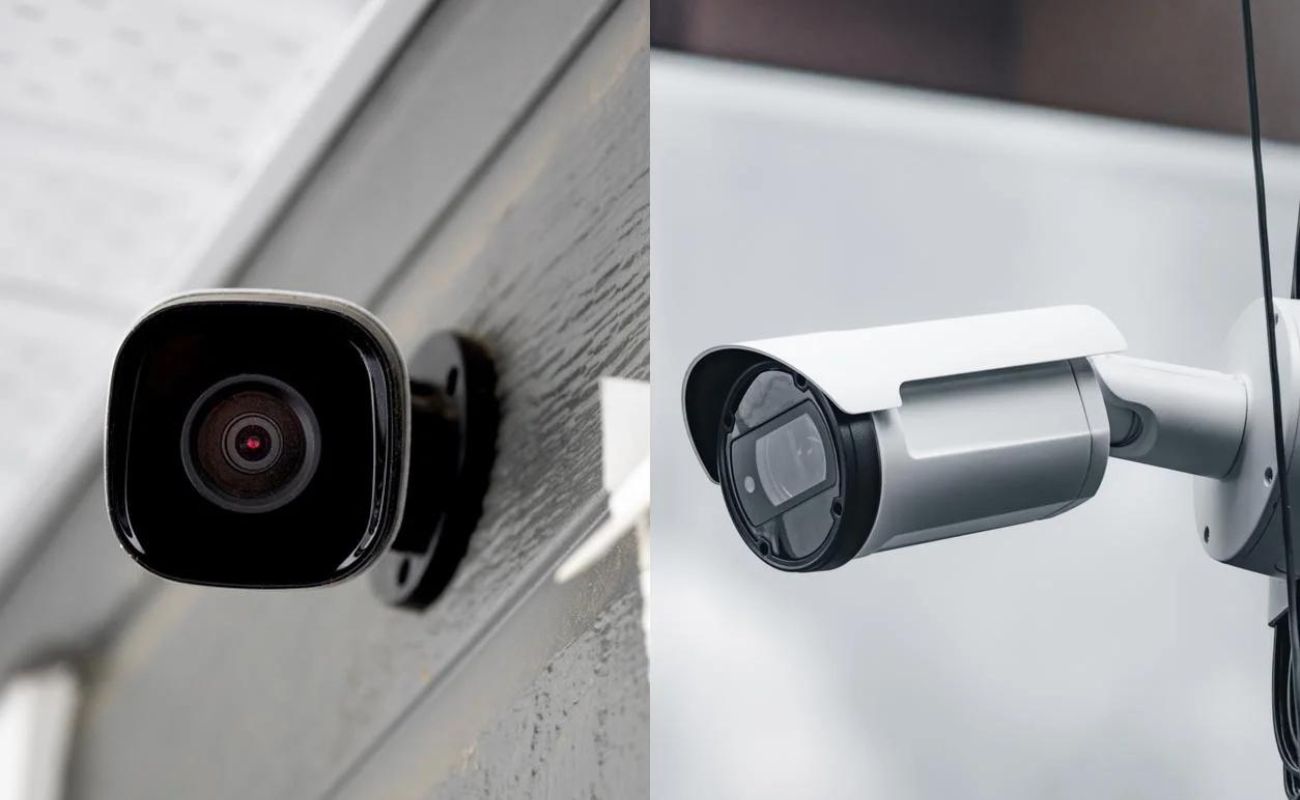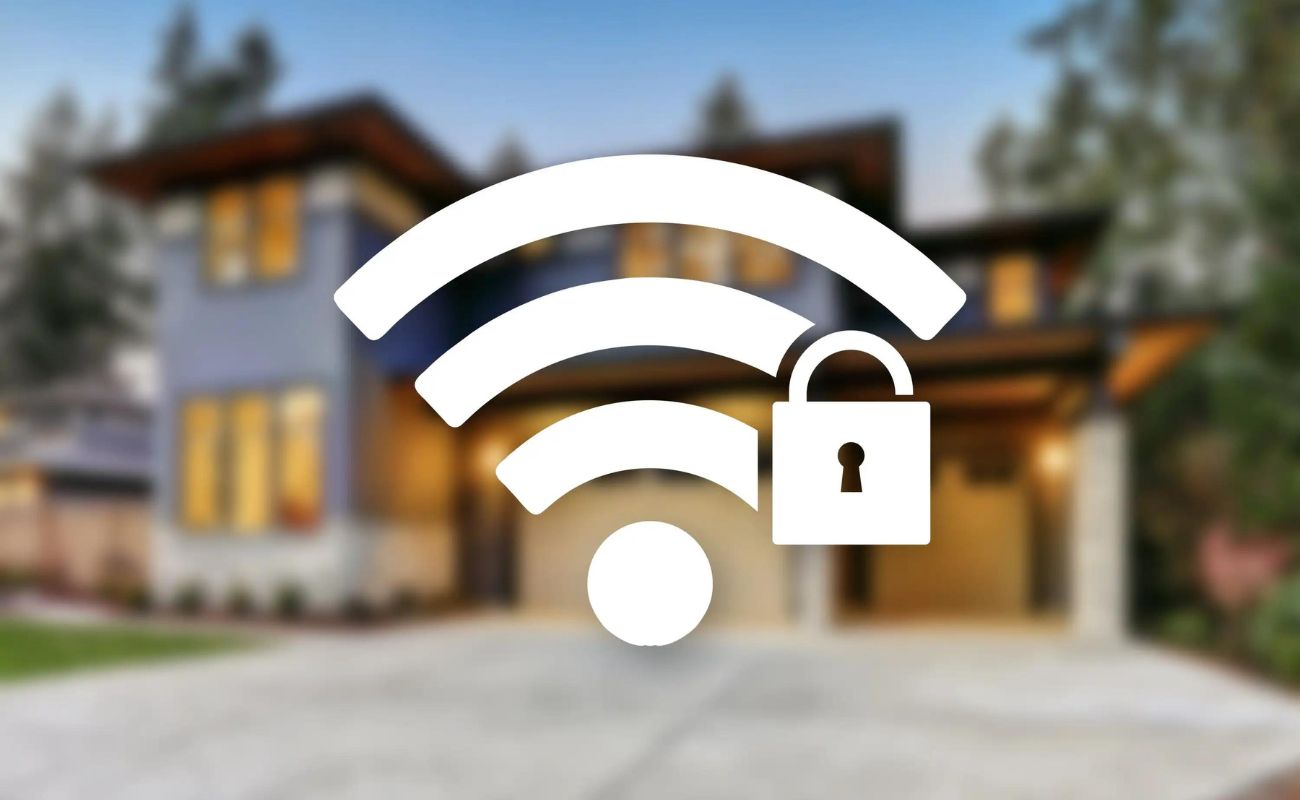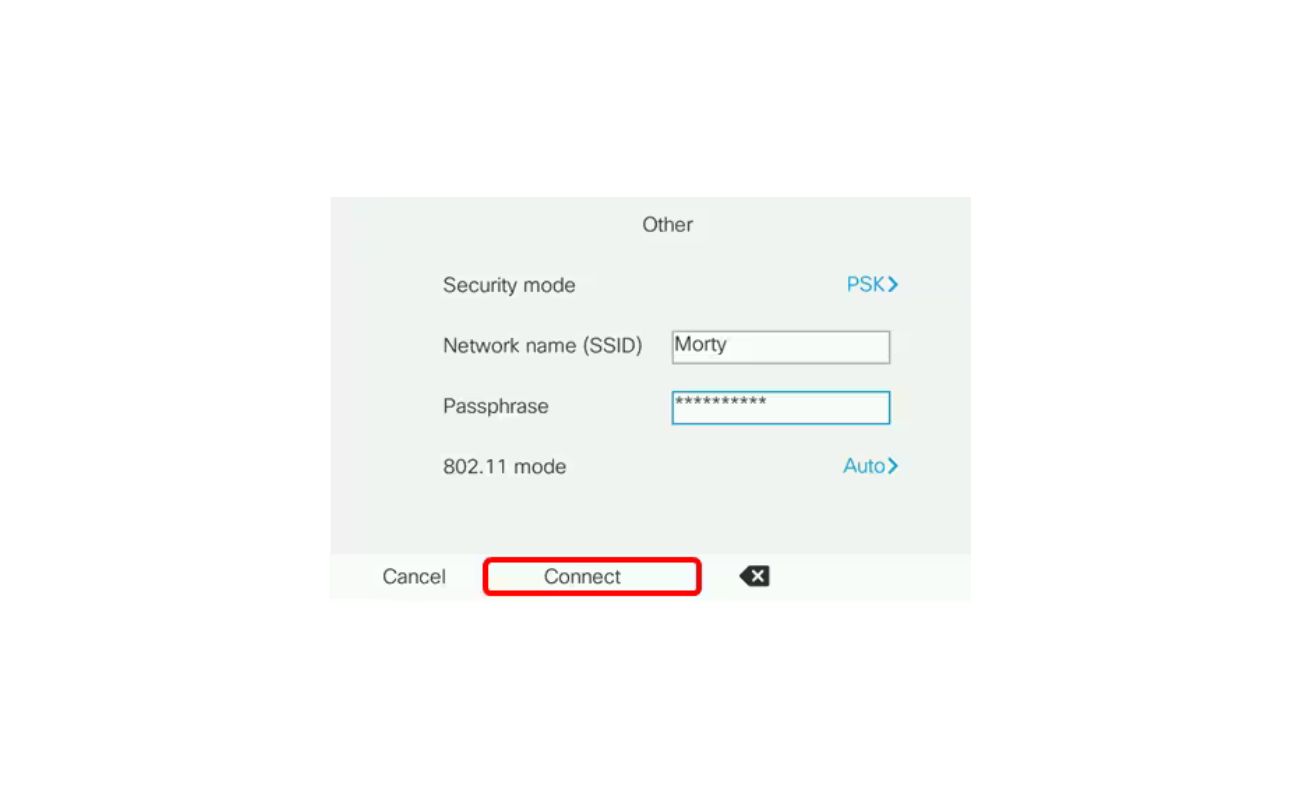Home>Home Security and Surveillance>How Is Wireless Security Different Than Wired Security?


Home Security and Surveillance
How Is Wireless Security Different Than Wired Security?
Modified: September 1, 2024
Discover the key differences between wireless and wired security systems for home security and surveillance. Gain insights into the pros and cons of each option to make an informed decision.
(Many of the links in this article redirect to a specific reviewed product. Your purchase of these products through affiliate links helps to generate commission for Storables.com, at no extra cost. Learn more)
Introduction
Home security and surveillance systems are essential for safeguarding our homes and loved ones. In recent years, advancements in technology have introduced wireless security systems as an alternative to traditional wired systems. This shift has sparked the debate on the differences between wireless and wired security and which option is more suitable for protecting our homes.
In this article, we will explore the various aspects that differentiate wireless security from wired security. We will delve into the benefits and challenges of wireless security systems and compare them to their wired counterparts. By the end, you will have a comprehensive understanding of the unique features and considerations associated with wireless security.
Key Takeaways:
- Wireless security systems offer easy installation, remote access, and flexibility, but may be vulnerable to signal interference and require regular battery maintenance.
- Wired security systems provide stable connections and physical security, but lack remote access and may need professional installation, making them less flexible than wireless systems.
Overview of Wireless Security
Wireless security systems, as the name implies, utilize wireless technology to transmit data and communicate with various components of the system. Unlike traditional wired security systems that rely on physical connections, wireless security systems operate through wireless networks, such as Wi-Fi or cellular networks.
These systems consist of several key components, including:
- Wireless sensors: These sensors are placed strategically around the premises to detect any potential threats, such as motion, entry, or environmental changes.
- Control panel: The control panel serves as the command center of the security system, allowing users to arm and disarm the system, receive notifications, and control various settings.
- Wireless cameras: Surveillance cameras play a crucial role in wireless security systems, providing real-time video monitoring and recording of activities in and around the property.
- Mobile app integration: Many wireless security systems offer mobile apps that enable users to remotely monitor their property, receive alerts, and control the system from anywhere using their smartphones or tablets.
Wireless security systems offer a range of benefits that make them an attractive option for homeowners:
- Easy installation: Wireless systems do not require complex wiring, making installation quick and hassle-free. This allows homeowners to easily set up their security system without the need for professional assistance.
- Flexibility: Wireless sensors and cameras can be easily repositioned or added to the system without the constraints of physical wiring. This flexibility allows for customization and scalability according to the specific security needs of the property.
- Remote access: With mobile app integration, homeowners can access their security system remotely, providing peace of mind and the ability to monitor their property while away.
- Wireless communication: Wireless systems rely on stable and secure wireless networks, ensuring reliable communication between components without the risk of physical connection failure or tampering.
Despite these advantages, wireless security systems also come with their own unique challenges. These challenges include:
- Interference: Wireless systems may be susceptible to interference from other electronic devices or even neighboring wireless networks. This interference can potentially disrupt communication or trigger false alarms.
- Battery life: Wireless sensors and cameras rely on battery power, which means they need periodic replacement or recharging. This maintenance requirement may be seen as a drawback for some homeowners.
- Security vulnerabilities: Wireless systems, like any technology, are not immune to security vulnerabilities. It is crucial to choose a reputable and secure wireless security system to minimize the risk of hacking or unauthorized access.
Now that we have an overview of wireless security systems and their pros and cons, let’s delve deeper into the comparisons between wireless and wired security systems.
Benefits of Wireless Security
Wireless security systems offer a wide array of benefits that make them a popular choice for homeowners seeking convenience, flexibility, and advanced features. Let’s explore some of the key advantages of wireless security systems:
Easy Installation
One of the major advantages of wireless security systems is their ease of installation. Unlike wired systems that require drilling holes and running cables, wireless systems can be set up within a matter of minutes. This makes them ideal for both homeowners and renters who want a hassle-free installation process without damaging their property.
Flexibility and Scalability
Wireless security systems provide unparalleled flexibility and scalability. With wireless sensors, cameras, and other components, the system can be easily customized and reconfigured to adapt to changes in your home or security needs. If you decide to expand your system or rearrange the placement of sensors and cameras, it can be done with minimal effort and without the need for rewiring.
Remote Access and Control
With the integration of mobile apps, wireless security systems offer remote access and control. Through the app, you can monitor your home in real-time, receive notifications, and control various aspects of the system from anywhere, using your smartphone or tablet. Whether you’re at work or on vacation, you can have peace of mind knowing you can check in on your home security anytime.
Integration with Smart Home Devices
Wireless security systems seamlessly integrate with a wide range of smart home devices, allowing you to create a connected and comprehensive smart home ecosystem. You can integrate your security system with devices such as smart locks, thermostats, and lighting systems for enhanced convenience, energy efficiency, and automation. This integration enables you to control multiple aspects of your home with a single app or voice commands.
Enhanced Aesthetics
Without the need for visible wires and cables, wireless security systems offer a clean and streamlined aesthetic. This makes them more visually appealing and less obtrusive compared to their wired counterparts. If you take pride in maintaining the aesthetics of your home, wireless security systems provide a discreet and modern solution.
Reliable Communication
Wireless security systems rely on stable and secure wireless networks, ensuring reliable communication between the components of the system. With advancements in wireless technology, the risk of communication failures or signal interference has significantly decreased. This results in a dependable and efficient security system that can effectively detect and respond to potential threats.
These benefits clearly highlight the advantages that wireless security systems offer. However, it’s important to consider the challenges and limitations of wireless systems as well. In the next section, we will explore the challenges associated with wireless security systems and how they compare to wired systems.
Challenges of Wireless Security
While wireless security systems offer numerous benefits, they also come with certain challenges. Understanding these challenges is essential when considering whether wireless security is the right choice for your home. Let’s explore some of the key challenges associated with wireless security systems:
Interference
Wireless systems can be prone to interference from various sources, such as other electronic devices and neighboring wireless networks. This interference can disrupt the communication between components and may result in false alarms or missed alerts. It’s crucial to ensure that your wireless security system operates on a frequency that is less susceptible to interference.
Battery Life
Unlike wired security systems, which draw power from a constant electrical source, wireless systems rely on battery-powered sensors, cameras, and other devices. This means that batteries need to be periodically replaced or recharged. It’s important to monitor battery life to ensure that the system remains operational at all times and to avoid any lapses in security due to drained batteries.
Signal Range Limitations
Wireless security systems function within a limited range, determined by the strength of the wireless signal and the distance between devices. Large properties or homes with multiple floors may experience limitations in signal range, potentially impacting the effectiveness and reliability of the system. It’s advisable to evaluate your property’s size and layout to determine if additional signal boosters or repeaters are necessary to overcome range limitations.
Security Vulnerabilities
While wireless security systems have improved in terms of security, they are still susceptible to certain vulnerabilities. Wireless signals can be intercepted or hacked if not properly secured. It’s crucial to choose a reputable wireless security system and implement strong security measures, such as encrypted communication protocols and secure network connections, to minimize the risk of unauthorized access and data breaches.
Maintenance and Upkeep
Wireless security systems require regular maintenance and upkeep to ensure optimal performance. This includes checking battery levels, updating firmware, and ensuring all components are functioning correctly. If any device or sensor malfunctions, it is important to address the issue promptly to maintain the system’s overall integrity and effectiveness.
Understanding these challenges can help you make an informed decision about whether wireless security is the right choice for your home. It’s important to weigh the benefits against the challenges and consider factors such as your property size, budget, and security priorities before making a final decision.
Next, let’s dive deeper into the comparison between wireless security systems and their wired counterparts, focusing on the differences in architecture.
Comparison of Wireless Security and Wired Security
Wireless security systems and wired security systems differ in many aspects, from their architectural setup to their authentication and encryption methods. Understanding these differences can help you determine which type of security system is the best fit for your home. Let’s explore the key areas of comparison between wireless security and wired security:
Differences in Architecture
Wireless security systems rely on wireless networks, such as Wi-Fi or cellular networks, to transmit data between the various components. On the other hand, wired security systems use physical cables to establish connections between the sensors, cameras, control panel, and other devices. The wired architecture ensures a stable and secure connection, while wireless systems provide the flexibility of easy installation, scalability, and freedom from physical constraints.
Differences in Authentication
Authentication in wireless security systems typically involves the use of unique passcodes or PINs to verify the identity of authorized users when accessing or controlling the system. This authentication process helps prevent unauthorized access to the system. In contrast, wired security systems may utilize similar authentication methods but can also incorporate additional measures such as physical keys or access cards.
Differences in Encryption
Encryption plays a vital role in securing the communication between the components of a security system. With wireless security systems, data transmitted over the wireless network is encrypted using encryption protocols such as WPA2 (Wi-Fi Protected Access II) or AES (Advanced Encryption Standard) to protect against eavesdropping and unauthorized access. Wired security systems, on the other hand, primarily rely on the physical security of the cables, making it more difficult for data interception.
Differences in Access Control
Access control refers to the process of granting or restricting access to certain areas or functions of the security system. In wireless security systems, access control is typically managed through the control panel and mobile app, enabling homeowners to remotely arm or disarm the system and control various settings. In wired security systems, access control is often managed through physical control panels located within the premises, requiring direct interaction for system management.
Differences in Vulnerabilities
Both wireless and wired security systems have their own vulnerabilities that need to be considered. Wireless systems may be more susceptible to hacking attempts or signal interference, while wired systems can be compromised if an intruder gains physical access to the cables or control panels. It’s crucial to choose a security system with robust security features and regularly update firmware to address any known vulnerabilities.
Ultimately, the decision between wireless and wired security systems depends on various factors, such as the layout of your home, your specific security needs, and considerations for convenience and aesthetics. It’s important to evaluate these factors and consult with a security professional to determine which option is best suited for your home.
In the next sections, we will dive deeper into the specific differences in architecture, authentication, encryption, access control, and vulnerabilities between wireless and wired security systems.
Differences in Architecture
The architecture of a security system refers to its physical setup and the method of communication between different components. In this section, we will explore the differences in architecture between wireless security systems and wired security systems.
Wireless Security Systems
Wireless security systems utilize wireless communication technologies, such as Wi-Fi or cellular networks, to transmit data between the various components of the system. Sensors, cameras, and other devices in a wireless security system are typically battery-powered and communicate with a central control panel wirelessly.
The wireless architecture offers several advantages:
- Easy installation: Wireless systems require minimal installation effort since they do not require physical cables or wiring. Sensors and cameras can be placed anywhere within the range of the wireless network.
- Flexibility: With wireless systems, it is easier to change the positioning or add new devices without the need to rewire the entire system. This flexibility allows for customization and scalability as security needs evolve.
- Remote access: Wireless systems often integrate with mobile apps, allowing users to remotely monitor and control their security system from anywhere using a smartphone or tablet.
- Minimal physical visibility: Without the need for visible cables, wireless security systems offer a more aesthetically pleasing and discreet installation, with fewer physical obstructions.
Wired Security Systems
Wired security systems, unlike their wireless counterparts, rely on physical cables to establish connections between the different components of the system. These cables transmit power, data, and control signals between the sensors, cameras, control panel, and other devices. Most wired systems use a central control panel located within the premises to manage the system.
The wired architecture comes with its own set of advantages:
- Stable and secure connection: Physical wires provide a reliable and secure connection between components, eliminating the risk of signal interference or hacking attempts.
- Power supply: Wired systems are typically powered by an electrical source, ensuring a continuous power supply without the need for battery replacements or recharging.
- Greater distance range: Wired systems can cover larger distances without the limitations imposed by wireless signals, making them suitable for larger properties or buildings.
- Lower risk of signal interference: Wired systems are less susceptible to interference from other electronic devices or neighboring wireless networks, providing a more consistent and reliable communication path.
It’s important to note that wired systems often require professional installation due to the complexities of running cables and ensuring proper connectivity. This can result in higher installation costs compared to wireless systems that can be easily set up by homeowners themselves.
When considering the architecture of a security system, it’s essential to evaluate factors such as the layout of your home, the level of flexibility required, and any specific constraints or limitations that may affect the installation process.
In the next sections, we will examine the differences in authentication, encryption, access control, and vulnerabilities between wireless and wired security systems.
Differences in Authentication
Authentication is a crucial aspect of any security system as it ensures that only authorized individuals can access and control the system. In this section, we will explore the differences in authentication methods between wireless security systems and wired security systems.
Wireless Security Systems
Wireless security systems typically employ authentication methods that involve passcodes or PINs to verify the identity of authorized users. When accessing or controlling the system, users are required to enter a unique code to authenticate their identity.
Some wireless security systems also offer additional authentication measures such as biometric recognition (fingerprint or facial recognition) or key fobs for added security and convenience.
Authentication in wireless systems can typically be managed through the control panel or through a mobile app connected to the system. This allows users to remotely arm or disarm the system and control various settings from their smartphones or tablets.
Wired Security Systems
In wired security systems, authentication methods can be similar to those used in wireless systems, such as passcodes, PINs, or key fobs. However, wired systems may also incorporate physical keys or access cards for authentication purposes.
Wired security systems often rely on physical control panels located within the premises for system management. Users must interact directly with these control panels to authenticate themselves and access or control the security system.
Although wired security systems can utilize similar authentication methods, the physical presence required for authentication may be seen as a potential drawback in terms of convenience and accessibility.
Differences in Authentication Implications
The authentication methods used in both wireless and wired systems serve the same purpose: to ensure that only authorized individuals can access and control the security system.
Wireless security systems offer the advantage of remote access and control, allowing users to authenticate themselves and manage the system from anywhere using a mobile app. This flexibility provides convenience and peace of mind for homeowners who can monitor and control their security system remotely.
On the other hand, wired security systems may require physical interaction with control panels, limiting the ability to control and monitor the system from remote locations. However, this physical authentication process can provide an additional layer of security, as it requires the intruder to physically access the control panel to disarm or tamper with the system.
When choosing a security system, consider your lifestyle, convenience preferences, and the level of security you require. Wireless systems offer remote access and control, making them suitable for homeowners who prioritize convenience and flexibility. Wired systems, with physical authentication and control panels, may be more suitable for those seeking a more traditional, physically secure approach.
In the next sections, we will explore the differences in encryption, access control, and vulnerabilities between wireless and wired security systems.
Differences in Encryption
Encryption plays a crucial role in protecting the communication and data transmitted within a security system. In this section, we will discuss the differences in encryption methods used in wireless security systems and wired security systems.
Wireless Security Systems
Wireless security systems utilize encryption methods to ensure the confidentiality and integrity of the data transmitted over wireless networks. The most commonly used encryption protocol for wireless security systems is WPA2 (Wi-Fi Protected Access II).
WPA2 encryption uses the Advanced Encryption Standard (AES), which is a widely recognized and robust encryption algorithm. It provides strong protection against unauthorized access and eavesdropping attempts.
Additionally, wireless security systems often implement measures such as unique network names (SSIDs) and passwords to prevent unauthorized devices from joining the wireless network and accessing the security system.
Wired Security Systems
Unlike wireless security systems, which rely on encryption protocols for wireless communication, wired security systems primarily depend on the physical security of the cables themselves.
Wired systems transmit data through physical cables, which are not typically encrypted. Instead, the security of a wired security system lies in the difficulty of physically tapping into or tampering with the cables. This makes it more challenging for intruders to intercept or manipulate the data being transmitted within the system.
Differences in Encryption Implications
Wireless security systems benefit from the robust encryption provided by protocols like WPA2/AES. This encryption ensures that the data transmitted between the components of the system remains confidential and secure, protecting it from potential interception or unauthorized access over the wireless network.
On the other hand, wired security systems do not rely on encryption for their data transmission. Instead, they depend on the physical security of the cables. This provides an extra layer of protection as intruders would need physical access to the cables to interfere with the system’s communication.
It is important to note that while encryption in wireless security systems adds an additional layer of security, it is essential to choose strong and secure passphrases or passwords. Weak or easily guessable passwords can undermine the effectiveness of encryption methods.
When considering a security system, evaluate the importance of encryption in your security setup. If you prioritize secure wireless communication, then a wireless security system with WPA2/AES encryption may be the best choice. However, for those looking for a physically secure method of data transmission, a wired security system may provide peace of mind.
In the next sections, we will dive into the differences in access control and vulnerabilities between wireless and wired security systems.
Differences in Access Control
Access control is a critical aspect of security systems that determines who can access and control the various components and functionalities of the system. In this section, we will explore the differences in access control methods between wireless security systems and wired security systems.
Wireless Security Systems
Wireless security systems typically employ access control through the use of control panels and mobile apps. These control panels act as the central command center, allowing users to arm or disarm the system, adjust settings, and receive alerts.
Mobile apps associated with wireless security systems not only provide remote access and control but also serve as an additional layer of access control. Users must authenticate themselves through the app, usually with a username and password or other authentication measures such as biometric recognition.
Access control in wireless security systems allows homeowners to manage and monitor their security system remotely, providing convenience and flexibility.
Wired Security Systems
In wired security systems, access control is often managed through physical control panels located within the premises. These control panels typically require direct interaction, such as entering a code or using a physical key or access card, to arm or disarm the system and adjust settings.
Access control in wired security systems offers a more traditional approach, where physical presence is required to interact with the control panel and access system functionalities.
Differences in Access Control Implications
Wireless security systems offer the convenience of remote access and control through mobile apps. Homeowners can control their security system from anywhere, providing a high level of accessibility and flexibility. This is especially beneficial for those who travel frequently or have a need for remote monitoring.
On the other hand, wired security systems rely on direct interaction with control panels. While this may lack the convenience of remote access, it adds a layer of physical security. An intruder would need to physically access the control panel to disarm or tamper with the system, which can act as a deterrent.
When considering access control, it’s essential to evaluate your lifestyle, security priorities, and convenience preferences. Wireless security systems excel in terms of convenience and remote accessibility, while wired security systems offer a more traditional and physically secure approach to access control.
Now that we’ve explored the differences in access control, let’s move on to examining the vulnerabilities associated with wireless and wired security systems.
Differences in Vulnerabilities
Security vulnerabilities can exist in both wireless and wired security systems, and understanding these vulnerabilities is crucial to making an informed decision about which system is best suited for your needs. In this section, we will explore the differences in vulnerabilities between wireless and wired security systems.
Wireless Security Systems
Wireless security systems, like any technology that relies on wireless communication, can be vulnerable to certain risks. Some vulnerabilities associated with wireless security systems include:
- Signal Interference: Wireless systems can be susceptible to signal interference from other electronic devices or neighboring wireless networks. This interference can disrupt communication or even trigger false alarms. Implementing measures such as choosing less congested wireless channels can help minimize the impact of signal interference.
- Physical Range Limitations: Wireless security system signals have inherent range limitations. Large properties or homes with multiple floors may experience decreased signal strength and coverage, potentially impacting the effectiveness and reliability of the system. Signal range extenders or additional access points can be employed to overcome these limitations.
- Security Breaches: Wireless networks can be vulnerable to hacking attempts if not properly secured. Weak passwords or outdated encryption protocols can potentially lead to unauthorized access or data breaches. Implementing strong WPA2/WPA3 encryption, changing default passwords, and regularly updating firmware can help mitigate these risks.
Wired Security Systems
While wired security systems are generally more difficult to compromise due to their physical nature, they can still have vulnerabilities that need to be mitigated. Some vulnerabilities associated with wired security systems include:
- Physical Tampering: Intruders may attempt to tamper with the physical cables or control panels of a wired security system. Gaining physical access to the system can potentially enable them to bypass or disable certain components. Proper installation and placement of control panels and cables, along with appropriate physical security measures, can help reduce the risk of physical tampering.
- Insider Threats: As with any security system, wired systems can be vulnerable to insider threats from individuals who have authorized access to the system. Unauthorized use or access by individuals within the property can compromise the security of the system. Implementing strict access control measures and regularly reviewing access permissions can help mitigate these risks.
It’s important to note that both wireless and wired security systems can be secured effectively when proper security measures are implemented. Choosing reputable security systems with robust security features, regularly updating firmware, using strong encryption, and following best practices for access control can help minimize the vulnerabilities associated with both types of systems.
When selecting a security system, consider factors such as the layout of your home, your specific security needs, and the level of convenience or flexibility desired. Also, consult with security professionals or providers to ensure that the chosen system is well-suited to your requirements and offers the necessary security measures.
Now that we’ve explored the vulnerabilities, let’s summarize the key points and conclude our comparison between wireless and wired security systems.
Conclusion
Choosing the right security system for your home is a crucial decision that requires careful consideration of various factors. Both wireless security systems and wired security systems offer unique features, benefits, and challenges that need to be weighed to ensure the best fit for your specific needs.
Wireless security systems provide easy installation, flexibility, remote access, and integration with smart home devices. They offer the convenience of monitoring and controlling your security system from anywhere using a mobile app. However, they may be susceptible to signal interference, have limited battery life, and require adequate security measures to protect against hacking attempts.
On the other hand, wired security systems offer the stability and security of physical connections. They are less susceptible to interference and have a continuous power supply. Wired systems also provide a physical barrier against unauthorized access through tampering with cables or control panels. However, they require professional installation, lack the flexibility for system reconfiguration, and may not offer remote access options.
Both wireless and wired security systems have their own strengths and vulnerabilities. It is crucial to evaluate your specific requirements, property layout, and security priorities to determine the most suitable option for your home.
Regardless of the system you choose, implementing strong authentication measures, encryption protocols, access control procedures, and regular maintenance will help address potential vulnerabilities and ensure the security of your home.
Consulting with security professionals can provide valuable insights and guidance in choosing the right security system and implementing the necessary security measures.
In conclusion, both wireless and wired security systems have their merits and limitations. By understanding the differences and considering your unique needs, you can make an informed decision to protect your home and loved ones with a reliable and effective security solution.
Frequently Asked Questions about How Is Wireless Security Different Than Wired Security?
Was this page helpful?
At Storables.com, we guarantee accurate and reliable information. Our content, validated by Expert Board Contributors, is crafted following stringent Editorial Policies. We're committed to providing you with well-researched, expert-backed insights for all your informational needs.






